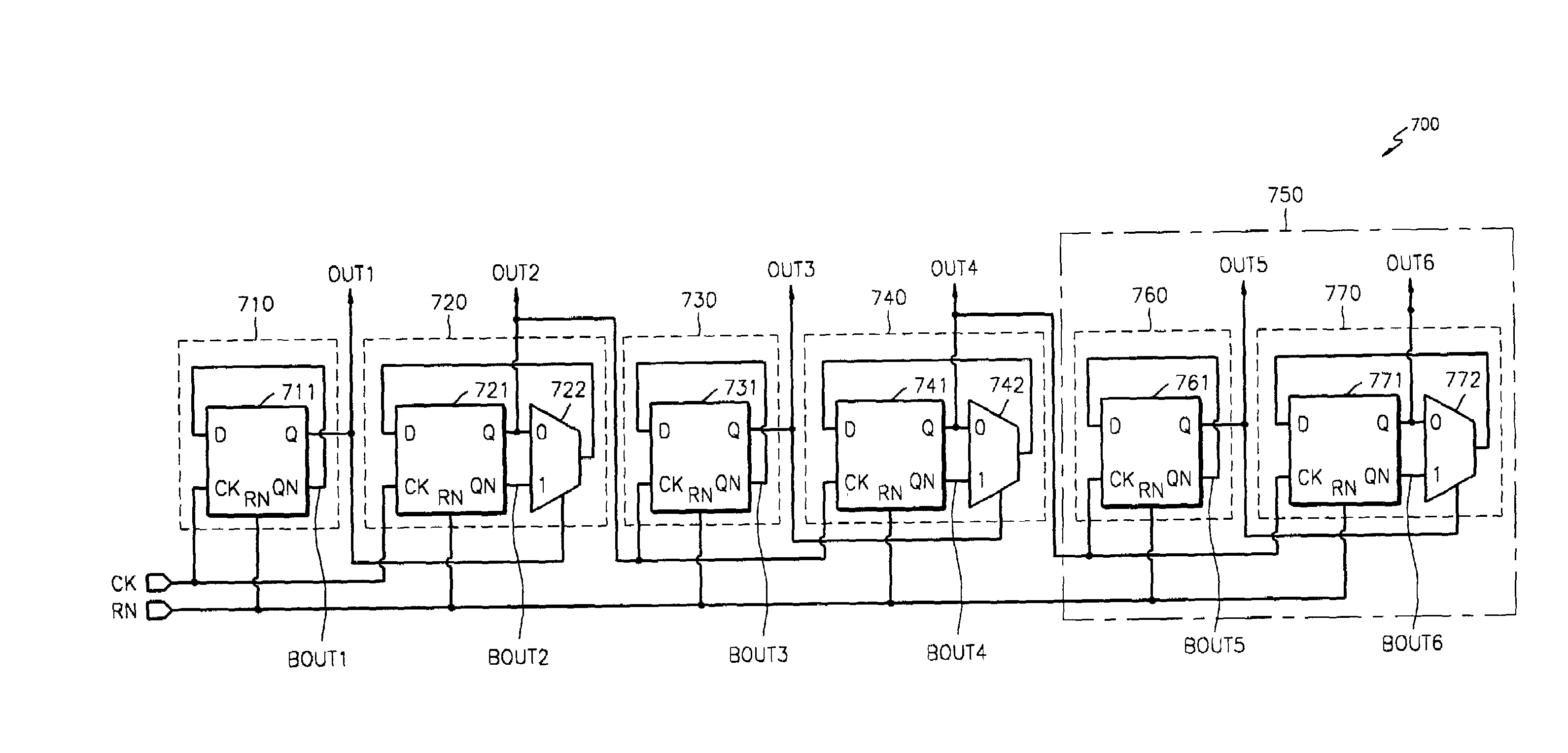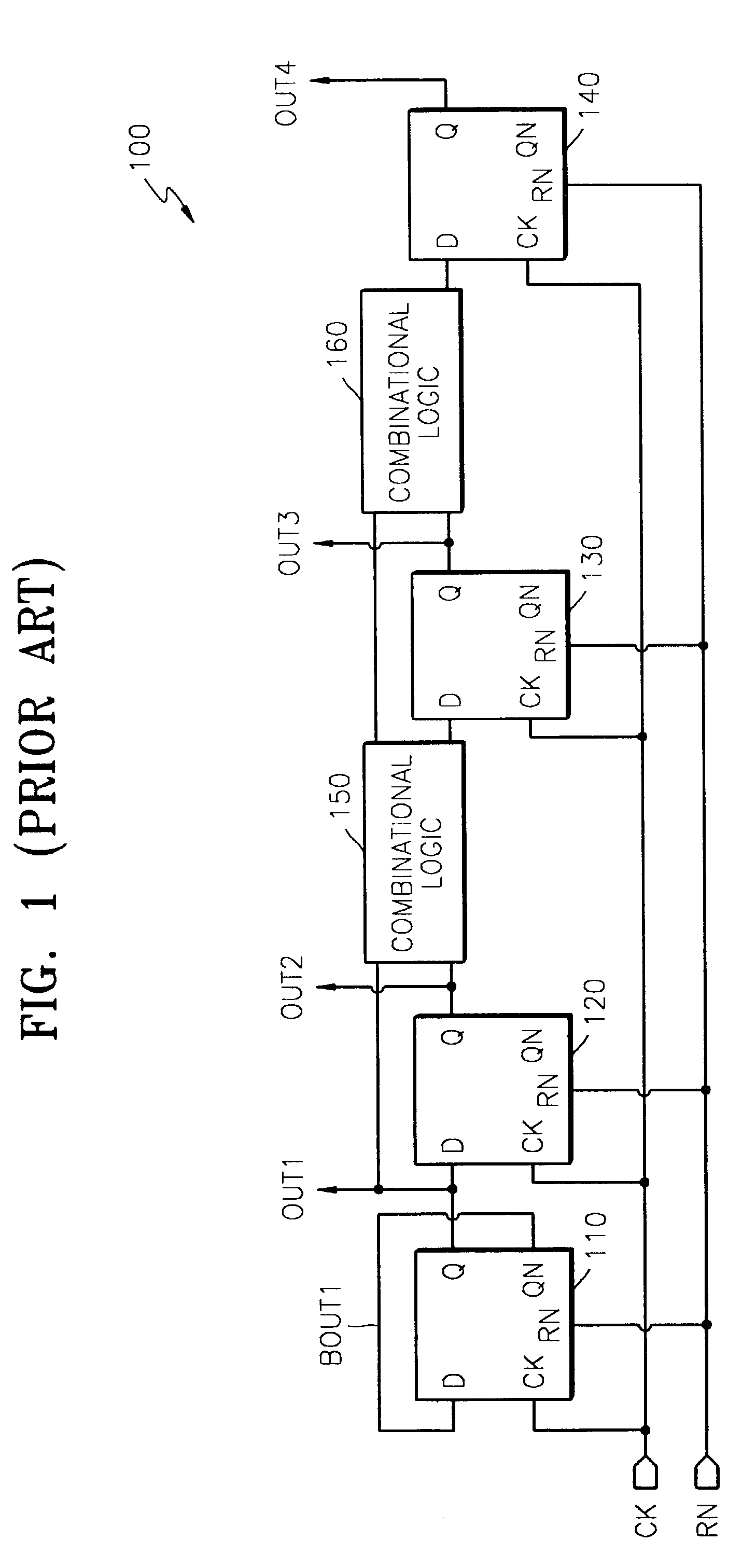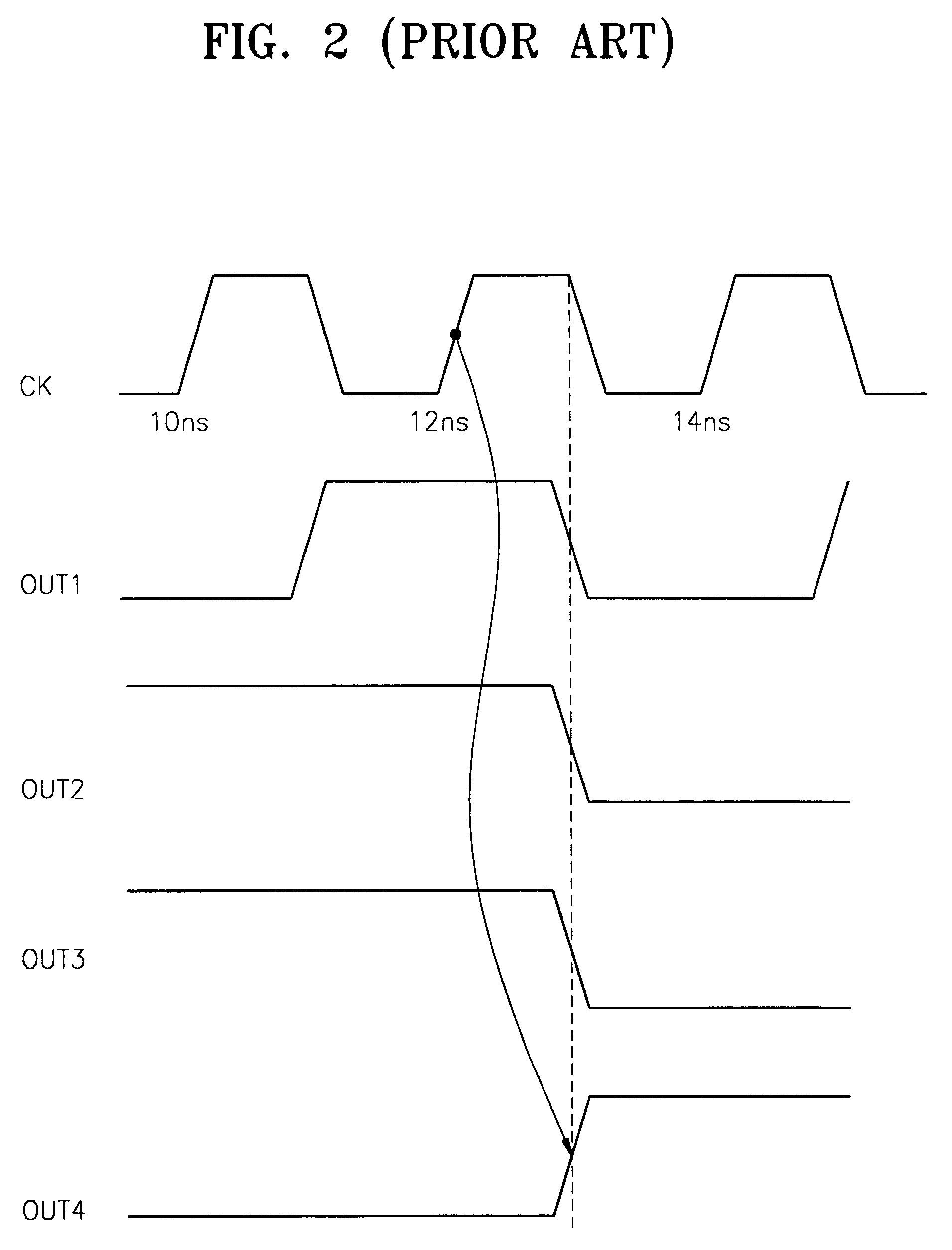Counter having improved counting speed
a counter and counting speed technology, applied in the field of counters, can solve the problems of increasing delay time and difficulty in determining the maximum frequency of the counter, and achieve the effect of widening the operational margin and reducing the delay time occurring
- Summary
- Abstract
- Description
- Claims
- Application Information
AI Technical Summary
Benefits of technology
Problems solved by technology
Method used
Image
Examples
first embodiment
[0029]FIG. 5 is a block diagram of a circuit of a synchronous counter 500 according to the present invention. Referring to FIG. 5, the synchronous counter 500 includes first through N-th output signal generators 510, 520, 530, 530 and 540. ‘N’ is a natural number greater than 1, set to 4 for this description.
[0030]The first output signal generator 510 outputs a first output signal OUT1, which has a low level and a high level in each cycle of a clock signal CK, in response to the clock signal CK. The second output signal generator 520 outputs a second output signal OUT2, which has a low level and a high level in every two cycles of the clock signal CK, in response the clock signal CK and the first output signal OUT1. The third clock signal generator 530 outputs a third output signal OUT3, which has a low level and a high level in every four cycles of the clock signal CK, in response to the clock signal CK and the second output signal OUT2. The N-th output signal generator outputs an ...
second embodiment
[0042]FIG. 7 is a block diagram of a circuit constituting a non-synchronous counter 700 according to the present invention. The counter 700 includes first through N-th output signal generators and N+1th through N+M-th output signal generators. N and M are natural numbers greater than 1, and for this description N is set to 2 and M is set to 2.
[0043]A first output signal generator 710 responds to a clock signal CK and outputs a first output signal OUT1 that has a low level and a high level once per cycle of the clock signal CK.
[0044]A second output signal generator 720 responds to the clock signal CK and the first output signal OUT1 and outputs a second output signal OUT2 which has a low level and a high level every two cycles of the clock signal CK.
[0045]A third output signal generator 730 responds to the second output signal OUT2 and outputs a third output signal OUT3 which has a low level and a high level once per cycle of the second output signal OUT2.
[0046]A fourth output signal...
third embodiment
[0063]Hereinafter, a synchronous counter according to the present invention will be described. The synchronous counter includes: a first output signal generator which responds to a clock signal, receives an inversion signal of a predetermined output signal and outputs the inversion signal as a first output signal; and second through N-th output signal generators which respond to the clock signal and an output signal generated by the preceding output signal generator and output predetermined second through Nth output signals (where N is a natural number greater than 1).
[0064]The first output signal generator includes a first flip flop which responds to the clock signal, outputs the inversion signal of the first output signal to an input terminal, and outputs the inversion signal as the first output signal.
[0065]Each of the second through Nth output signal generators includes 2N−2 flip flops connected together in the respective output signal generator, and a selecting means which resp...
PUM
 Login to View More
Login to View More Abstract
Description
Claims
Application Information
 Login to View More
Login to View More - R&D
- Intellectual Property
- Life Sciences
- Materials
- Tech Scout
- Unparalleled Data Quality
- Higher Quality Content
- 60% Fewer Hallucinations
Browse by: Latest US Patents, China's latest patents, Technical Efficacy Thesaurus, Application Domain, Technology Topic, Popular Technical Reports.
© 2025 PatSnap. All rights reserved.Legal|Privacy policy|Modern Slavery Act Transparency Statement|Sitemap|About US| Contact US: help@patsnap.com



